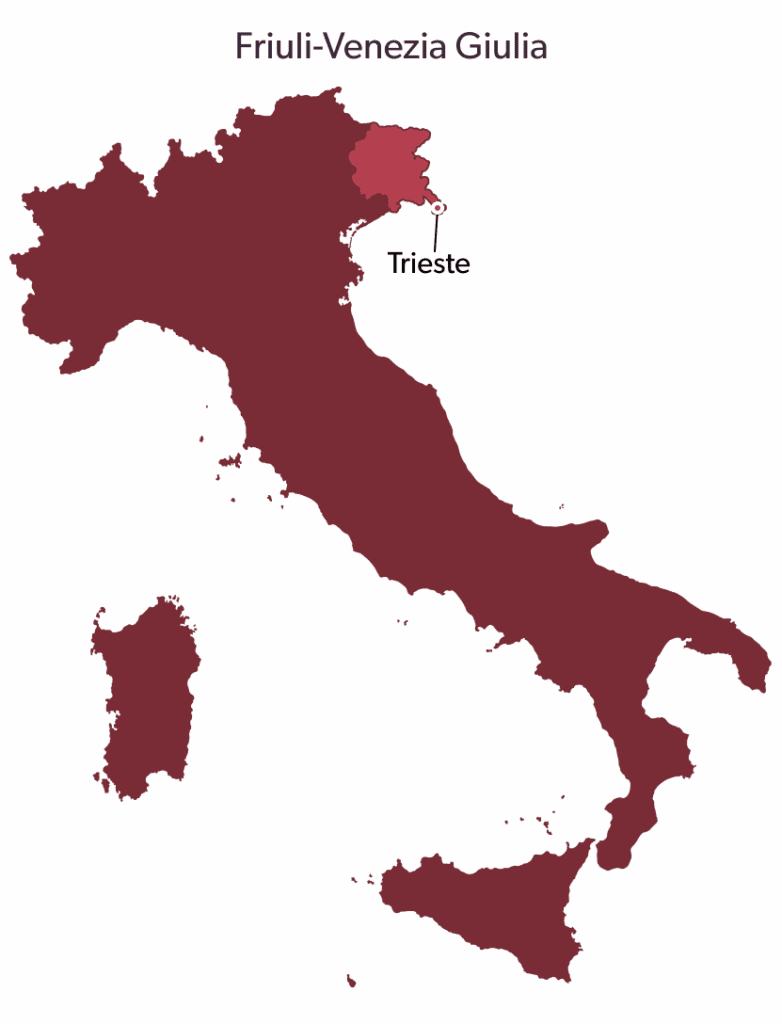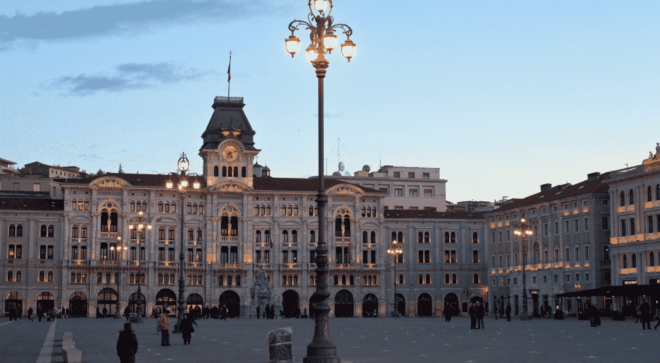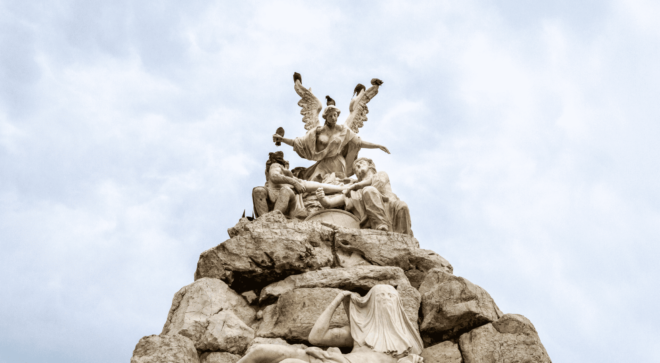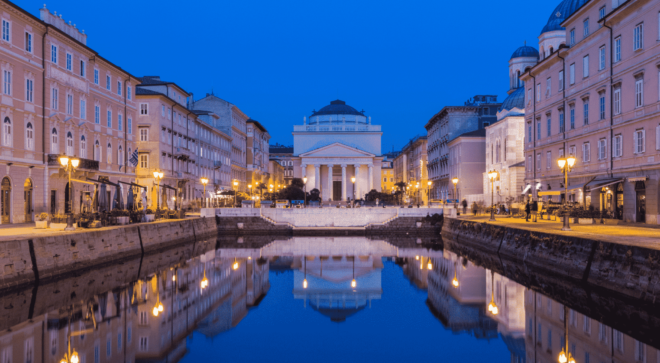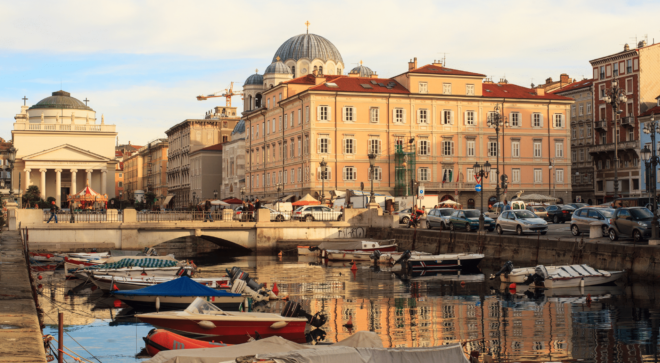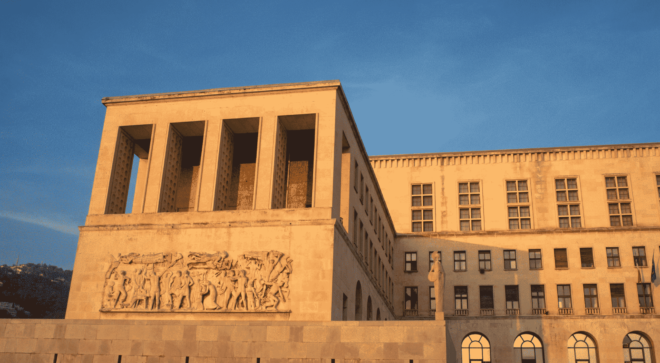- Travel -
- Cultural
Discover Trieste, the lively city
Trieste is the city of the wind and the sea, where cultures meet in a melting pot of European flavors. The wind is a key element of an extraordinary event organized in Trieste and supported by the Consorzio di Tutela Prosecco DOC, la Barcolana. The city is famous for its coves which allow spectators to see the boats chasing each other in a dance of sparks and bubbles!
Prosecco DOC is a white, Italian sparkling wine made with at least 85% Glera grapes and comes in four levels, from the driest to the sweetest: Brut, Extra Dry, Dry and Demi-Sec. It is very versatile; it can be consumed on its own or incorporated into cocktails. Real Italian Prosecco bottles are labelled with the acronyms DOC (Denominazione di Origine Controllata) and DOCG (Denominazione di Origine Controllata e Garantita). These certifications are a guarantee of quality and authenticity.
The province of Trieste extends along a small strip of land in the southeastern extremity of Friuli Venezia Giulia, between the Adriatic Sea and the border with Slovenia. The peculiarity of the environment, the treasures of history and art and the distinctly Central European character make it an extraordinary destination, which in the past enchanted and inspired important writers such as Rainer Maria Rilke, James Joyce, and Italo Svevo.
On the coastal stretch opens the vast gulf that welcomes the city of Trieste with its port and an alternation of bays, marinas and breathtaking cliffs with castles overlooking the sea, including the spectacular Miramare castle. The province of Trieste is characterized by the harsh karst landscape that can surprise and fascinate visitors.
Near the coast, the area looks like a stony moor where gusts of the bora, a mighty wind, rage and dotte with Mediterranean vegetation, while inland, a succession of hills with valleys prevails.
The Val Rosandra Nature Reserve, where rare and particular plants grow, the Miramare Marine Nature Reserve, which extends into a marine-coastal environment with steep rocks and a great variety of underwater flora and fauna and the Nature Reserve of the Duino cliffs, a band of white cliffs that drop sheer into the sea, are rotected areas of particular value.
In the Trieste Karst, you can admire magnificent natural spectacles such as the famous Grotta Gigante, the mouths of the Timavo with green and flourishing banks, the characteristic Dolina di Percedol, a characteristic valley rich in luxuriant vegetation. There are also countless caves and caverns of speleological interest, many still unexplored.
But the charm of the territory goes beyond the naturalistic aspects. The elegant city of Trieste hosts the influences of the Habsburg culture, evident in the small villages of the hinterland. This tiny strip of land keeps all the traditions and allows tourists to discover the coast’s great treasures.
Triestine culinary specialties
The cuisine of the province of Trieste is rich and varied, combining Austrian, Venetian and Friulian influences. Among the very popular typical dishes are the jota, soup with cabbage, beans, pork and potatoes, the zuf, a dish based on polenta, various types of risotto and the so-called “gnochi de pan” and “gnochi de susini”.
Among the fish specialties they usually serve molluscs and crustaceans, and the spider crab alla Triestina stands out. In the Karst hinterland, the most potent flavours prevail: cheeses, sausages with sauerkraut and pork shank and, finally, baked ham are very popular. Typical desserts, deriving mainly from the Austrian and Slovenian tradition, are presnitz, a pastry filled with dried fruit, strucolo (an apple strudel), pinza and gubana.
No results found.
NULL00
No results found.
NULL00
No results found.
NULL00
NULL00
No results found.
NULL00
No results found.
NULL00

